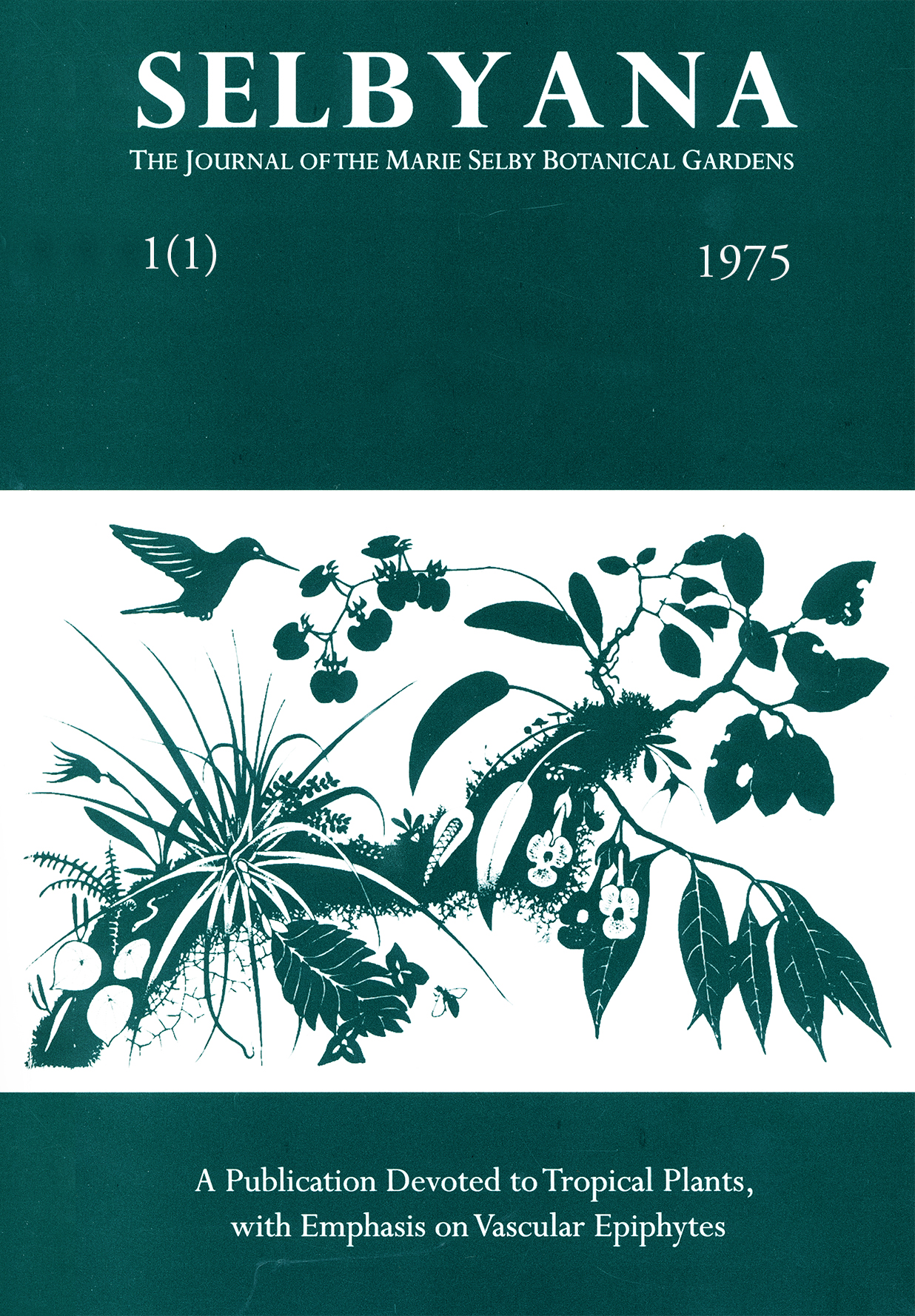Abstract
Not only is the Orchidaceae one of the largest families of Angiosperms, but it also has the least elucidated taxonomy of families of flowering plants of comparable size. This is in part due to the paucity of workers in this family. However, the Orchids have long been a problematic group in which relationships between taxa are extremely complex and often obscured by parallelism and rapid evolution of floral morphology. The family has a subcosmopolitan distribution, being equally characteristic of both tropical and temperate regions (Good, 1964) but the actual number of species is immensely greater in the tropics. It is with these tropical species that the taxonomical problems are compounded. Confusion arises particularly at the generic level. Many genera were described from collections made by the early botanical expeditions in the tropics. Numbers of these preserved specimens were scanty, and they often lacked important diagnostic features. Subsequent collections included species that bridged many of these early generic concepts. Later workers, attempting to clarify the delimitations of these genera, grouped species which shared some "key" character. Even the more painstaking workers followed this tendency. In the writing of keys for groups of species, many characters or features are considered, sifted and sorted. When one particular feature emerges from the numerous other characters in what the author considers is a natural grouping, then he tends to over-emphasize the importance of that one feature. Thereafter, any species displaying that feature is included in that particular group. Very often, however, these characters are found to intergrade or are of little significance in indicating true relationships, being the outcome of parallel evolution or convergence. Instead of re-evaluating the original defining character, the tendency has been either to shuffle these problem groups back and forth between taxa or to set up new categories. A case in point is the genus Arachnis in the subtribe Sarcanthinae.
Open Access and Copyright Notice
Selbyana is committed to real and immediate open access for academic work. All of Selbyana's articles and reviews are free to access immediately upon publication. There are no author charges (APCs) prior to publication, and no charges for readers to download articles and reviews for their own scholarly use. To facilitate this, Selbyana depends on the financial backing of the Marie Selby Botanical Gardens, the hard work and dedication of its editorial team and advisory board, and the continuing support of its network of peer reviewers and partner institutions.
Authors are free to choose which open license they would like to use for their work. Our default license is the Creative Commons Attribution-NonCommercial 4.0 (CC BY-NC 4.0). While Selbyana’s articles can be copied by anyone for noncommercial purposes if proper credit is given, all materials are published under an open-access license with authors retaining full and permanent ownership of their work. The author grants Selbyana a perpetual, non-exclusive right to publish the work and to include it in other aggregations and indexes to achieve broader impact and visibility.
Authors are responsible for and required to ascertain that they are in possession of image rights for any and all photographs, illustrations, and figures included in their work or to obtain publication or reproduction rights from the rights holders. Contents of the journal will be registered with the Directory of Open Access Journals and similar repositories. Authors are encouraged to store their work elsewhere, for instance in institutional repositories or personal websites, including commercial sites such as academia.edu, to increase circulation (see The Effects of Open Access).
